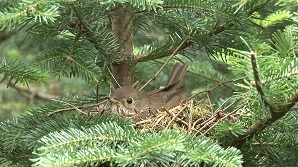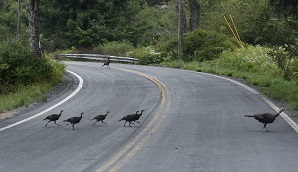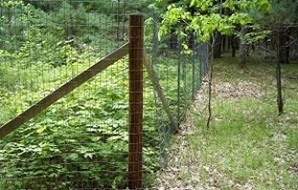Motus Stations on Wildlife Management Areas 
It's been nearly two years since DEC partnered with the Northeast Motus Collaboration to install Motus wildlife tracking stations on five Wildlife Management Areas (WMAs) across New York. As part of the Motus Wildlife Tracking System, the stations at Rome, Perch River, Upper and Lower Lakes, Three Rivers, and Lake Shore Marshes WMAs are already contributing to a growing body of knowledge about bird migration and full life cycle conservation. Currently, DEC's main role is to provide locations on state land for stations to be installed and maintained for several years. This helps support the overall Motus collaboration, fill strategic gaps in network coverage, and facilitate research projects that other agencies, universities, and organizations are conducting. These wildlife researchers attach tiny tracking devices to birds and other species to determine when, where, and how these animals move across the landscape. Over time, connecting the dots between detections reveals each individual's story—where they spent the breeding season, what route they took and stopovers they used during spring and fall migration, where they overwintered—complete with a timeline of their arrivals and departures. So far, the five stations on WMAs have detected nearly one hundred tagged birds representing 23 different species, contributing to 20 research projects! One of the highlights has been an American redstart that was tagged in Jamaica in April 2022. In just a few weeks, this warbler travelled north through Florida and Pennsylvania before being detected at Lake Shore Marshes WMA in May! To learn more, you can explore Motus data and check out these resources for students and educators. Photo: Wood thrush with nanotag by Northeast Motus Collaboration.
Species Spotlight: Bicknell's Thrush 
On the cold, coniferous mountaintops of the Catskills lives a native bird that is a High Priority Species of Greatest Conservation Need: the Bicknell's Thrush. Nesting in the low branches of stunted conifers, Bicknell's Thrush exclusively relies on high altitude spruce-fir forests in the northeast to nest and raise chicks. Bicknell's Thrush is considered one of the most at-risk songbirds in eastern North America and highly vulnerable to habitat loss. An observed increase of informal trail networks on Catskill peaks—trails made by hikers, not professionals—has led to a loss of vegetation and an increase of erosion. Left to expand, these trail networks have the potential to directly disturb these native birds and their young fledglings in the spring and summer. You Can Help: When in the Catskill peaks, be mindful to stay on existing trails, keep pets leashed, and watch your step for these little neighbors. Photo of Bicknell's thrush by Kent McFarland.
Be a Citizen Scientist! Report Your Turkey Sightings This August 
While you are exploring the forests and fields around your home or driving through the state's beautiful landscapes this summer, be sure to keep an eye out for wild turkeys. DEC uses reported observations of wild turkeys to track annual productivity (number of poults produced per adult hen) over time and in different parts of the state. It also helps forecast hunting prospects for the coming fall season and for subsequent spring seasons. Submit your observations online. Turkey populations in New York State hit their peak in the late 1990s and early 2000s and productivity was relatively high. However, over the past 10 years, turkey productivity has consistently been below average which leads to lower populations. This survey is an important monitoring tool that helps DEC effectively manage turkey populations. To see results from previous summer surveys, please visit DEC's website. Photo of turkey hens and poults by Kevin Watz.
Deer Management Assistance Program – Application Deadline is August 1 
DEC's Deer Management Assistance Program (DMAP) offers a way for landowners to meet deer management needs on their property, while providing an incentive to give licensed hunters access to deer and deer hunting. Permittees use DMAP to address crop damage, forest regeneration problems (the photo to the right depicts new forest growth in a 15-year deer exclosure), protect areas of sensitive and rare plants, enhance municipal deer harvest, and develop custom deer management programs. To learn more about DMAP, determine if you are eligible, and download the DMAP application, visit DEC's website. The DMAP application deadline is August 1, 2022. | 



No comments:
Post a Comment